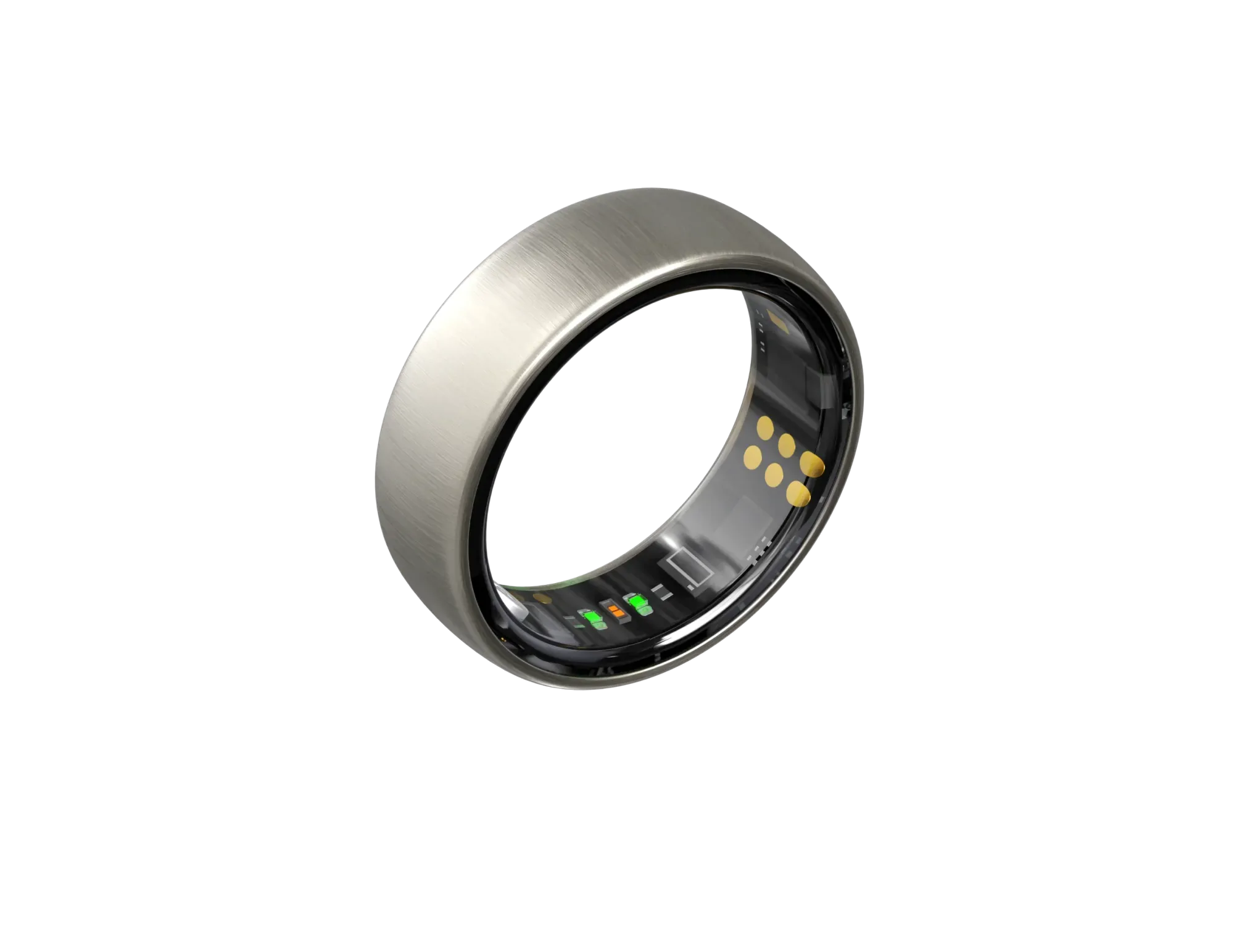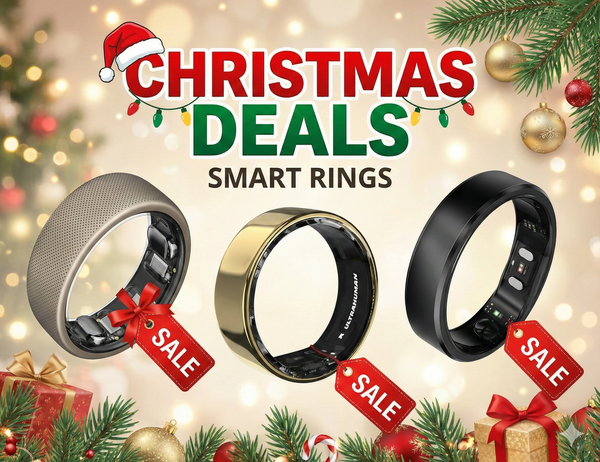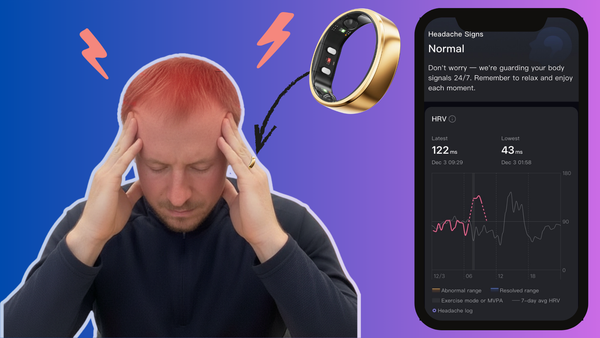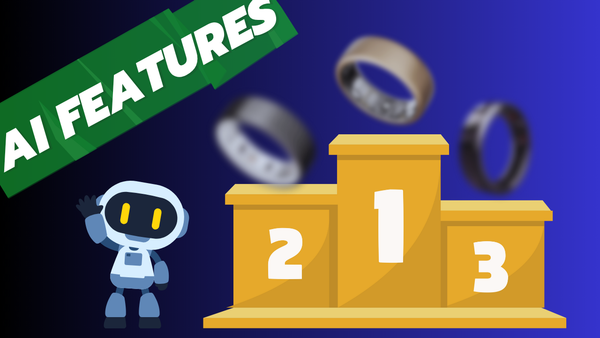Nova Smart Ring R Review: Stylish, but Is It Smart Enough?
Nova Ring R is a surprisingly solid budget smart ring. It tracks basic metrics — with decent hardware and minimalist design. A great entry point for anyone curious about smart rings without breaking the bank.
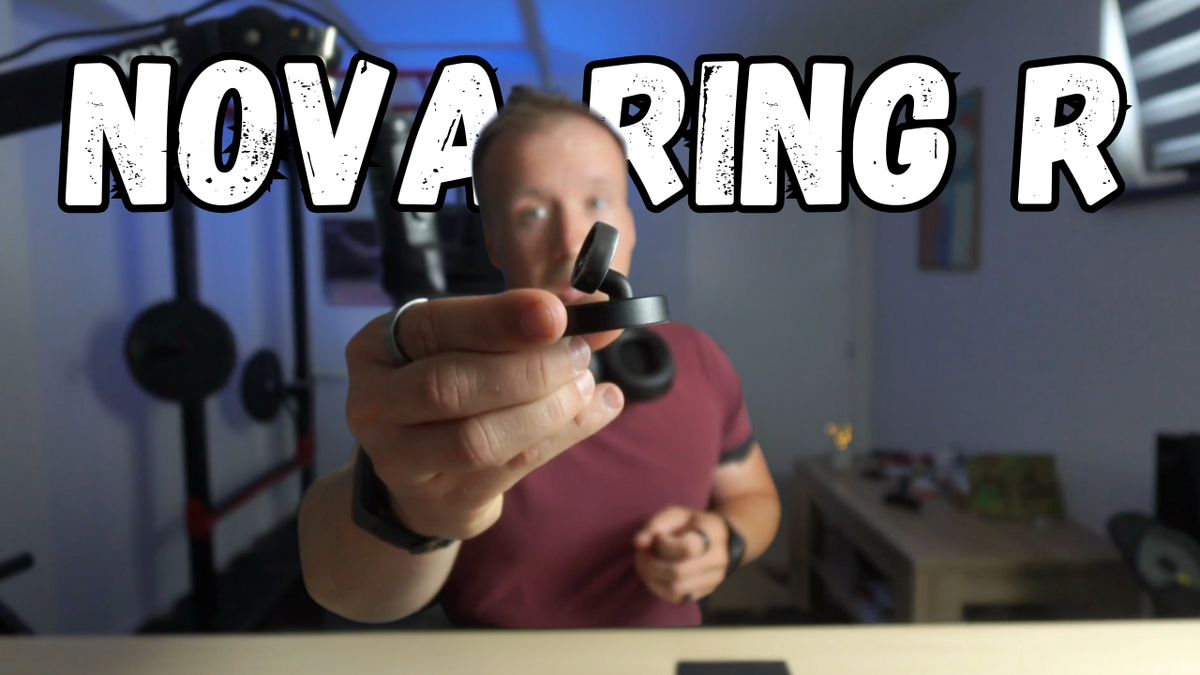
The Nova team reached me out to ask if I’d be interested in reviewing one of their smart rings. I agreed — and since I had previously tested their (previous generation) Nova Smart Ring, I was aiming to try the more advanced Nova X or Nova Pay. However, those models aren’t available yet, so we agreed on the Nova Ring R instead — an improved version of the original Nova ring I had reviewed in the past.
In this article, we’ll take a closer look at:
- what is part of the packaging,
- the ring itself and its core specs,
- the Nova app and how it performs,
- how it compares to premium smart rings like Oura or Ultrahuman,
- and of course — my final verdict.
Let’s get into it 💥
📏 How to Choose the Right Nova Ring Size
Before unboxing, let’s talk sizing — because a good fit is key for accurate data.
Nova makes it easy:
- ✅ You can order a free sizing kit, or
- ✅ Skip it if you already know your ring size.
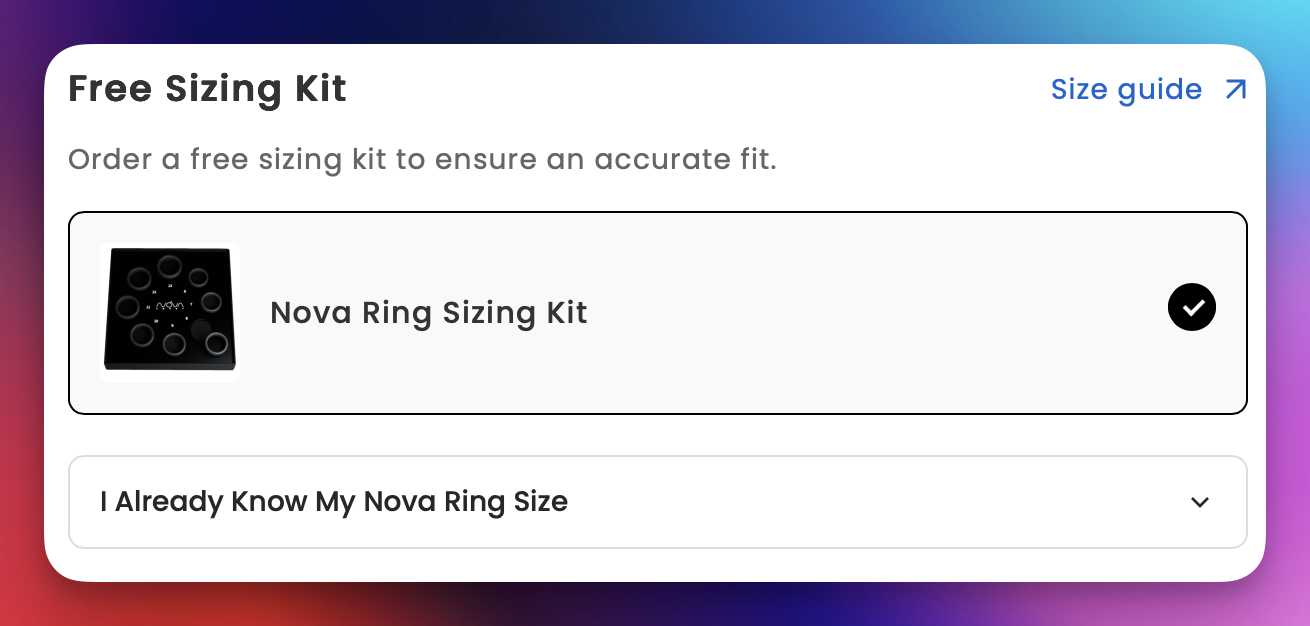
Not sure what size you need? 👉 Check out my full sizing guide here.
📦 Compact Packaging with Charging Dock / Stand
The Nova Ring R arrives in a sleek, well-organized box — clearly more refined than the original version. Also, somehow similar to old RingConn box.
Inside, you’ll find:¨
- 💍 the smart ring,
- 🧲 a magnetic charging dock / stand,
- 🔌 USB-A to USB-C cable
- 📖 a user manual
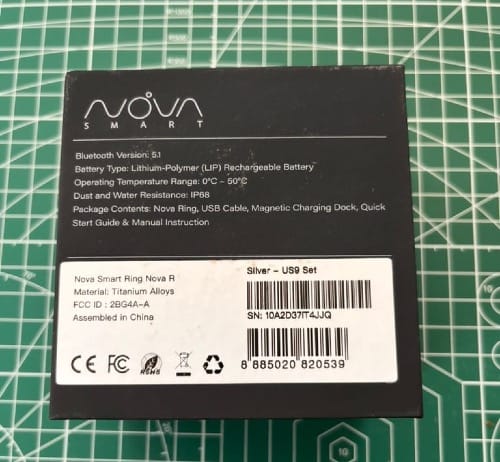
The charging dock uses a strong magnet and a single pogo pin to snap the ring into place securely. No need for perfect alignment — just drop it on, and it charges automatically.
Just a heads-up: ring sizes aren’t consistent across different brands. For example, I wear a size 9 in both the Oura Ring Gen 4 and the Nova Ring R — but the inner diameter is slightly different.
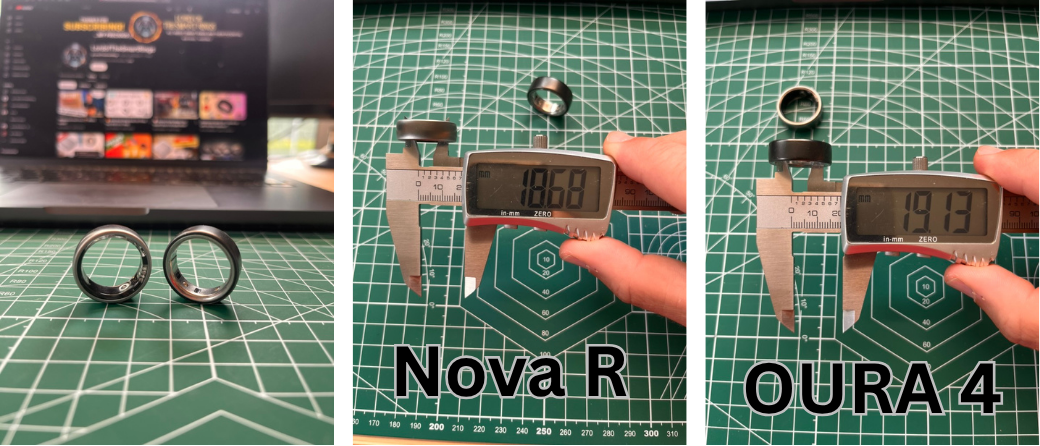
🏗️ Nova Ring R – Hardware & Build
The Nova Ring R is made from titanium alloy, which keeps it impressively light. My size 9️⃣ ring weighs just under 3 grams — slightly lighter than the Oura Ring Gen 4, which comes in at over 4 g. Despite the low weight, the build feels solid and premium - definitely more premium than my brushed previous version of Nova Ring..
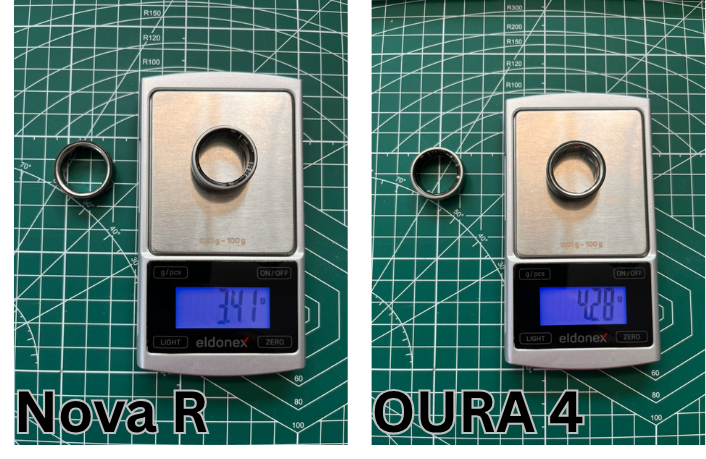
The matte finish gives it a clean and modern look, while also hiding fingerprints and scratches better than glossy surfaces.
🟡 Bonus points for the small dot on the inside of the ring — a simple but clever detail that helps you position the ring correctly on your finger every time.
🔋 Battery Life
Nova claims a battery life of 3–4 days, depending on usage. In my testing, I consistently got around 4 days on a full charge.

That’s on the weaker side of average compared to other smart rings — not terrible, but nothing to brag about either. On the plus side, it fully recharges in about one hour.
⚡ Charging Dock
As mentioned earlier, the Nova Ring R comes with a compact and practical charging dock. It’s a step up from some budget rings that only include a basic cable, offering a more elegant and user-friendly way to recharge the ring.

The magnetic connection makes daily charging effortless — just drop the ring onto the dock, and it snaps into place.
📡 Sensors
The Nova Ring R includes a standard set of sensors for this price range:
- an accelerometer for step counting and also part of calorie estimation,
- and a PPG optical sensor for tracking heart rate (HR) and blood oxygen (SpO₂).
The optical sensors are visibly prominent, especially the green LED used for HR monitoring, which glows quite brightly during measurements. While even premium rings emit light, they often use more recessed or diffused LED placement, making them less noticeable in daily use or at night.
The ring also includes a temperature sensor, which tracks deviations from your personal baseline — similar to how the Oura Ring handles temperature trends.
📲 Software – The Nova Ring App
Over time, I’ve witnessed a significant improvement in the Nova Ring app — both in terms of design and functionality. It’s available for both iOS and Android and connects to the ring via Bluetooth.
Let’s walk through the current state of the app and what you can expect in daily use.
The app is divided into these tabs:
- 🏠 Today – This is the home screen, organized into tile-like sections for a quick overview of your data:
- Insights – AI-generated tips based on your latest measurements - very often mentioning steps.
- Activity – Daily summary of steps, calories, and active minutes, with drill-down views by day, week, or month
- Recovery – A 0–100 score with a short AI-generated comment. Based on deeper analysis, this score seems to be influenced mainly by step count, sleep quality, resting heart rate, and average HRV
- Tags – A simple daily journal to log habits, food, mood, or other user inputs
- Sleep – Shows total sleep duration and a basic hypnogram
- Exercise Records – Lets you manually start and track workouts
- Measurements – On-demand readings of heart rate, HRV, SpO₂, and estimated stress level
- 🌙 Sleep – Provides a detailed breakdown including total sleep time, average heart rate, HRV, temperature deviation, sleep stages and movement, blood oxygen during sleep, chronotype, weekly trends, and “biological clock” estimation.
- 💧 Recovery – The same recovery score and insights as on the home screen, but in a standalone view.
- 🧘 Meditation – A library of guided breathing and meditation exercises. Nicely done — though not directly integrated with ring data.
- ⚙️ Settings – Manage ring connection, account settings, gesture control (e.g. for camera using the accelerometer), Apple Health integration, and more.
The app runs smoothly — no crashes or lag during my testing. Syncing with the ring is fast and reliable. I did encounter a minor issue where some data didn’t show up, but reinstalling the app resolved it.
One downside: some key metrics like stress and blood oxygen (SpO₂) are only available on demand, not passively tracked in the background. That’s a limitation compared to more advanced rings.
What about competitors?
I find it interesting that the Nova team avoided mentioning the exact names of other smart rings in their comparison table below:
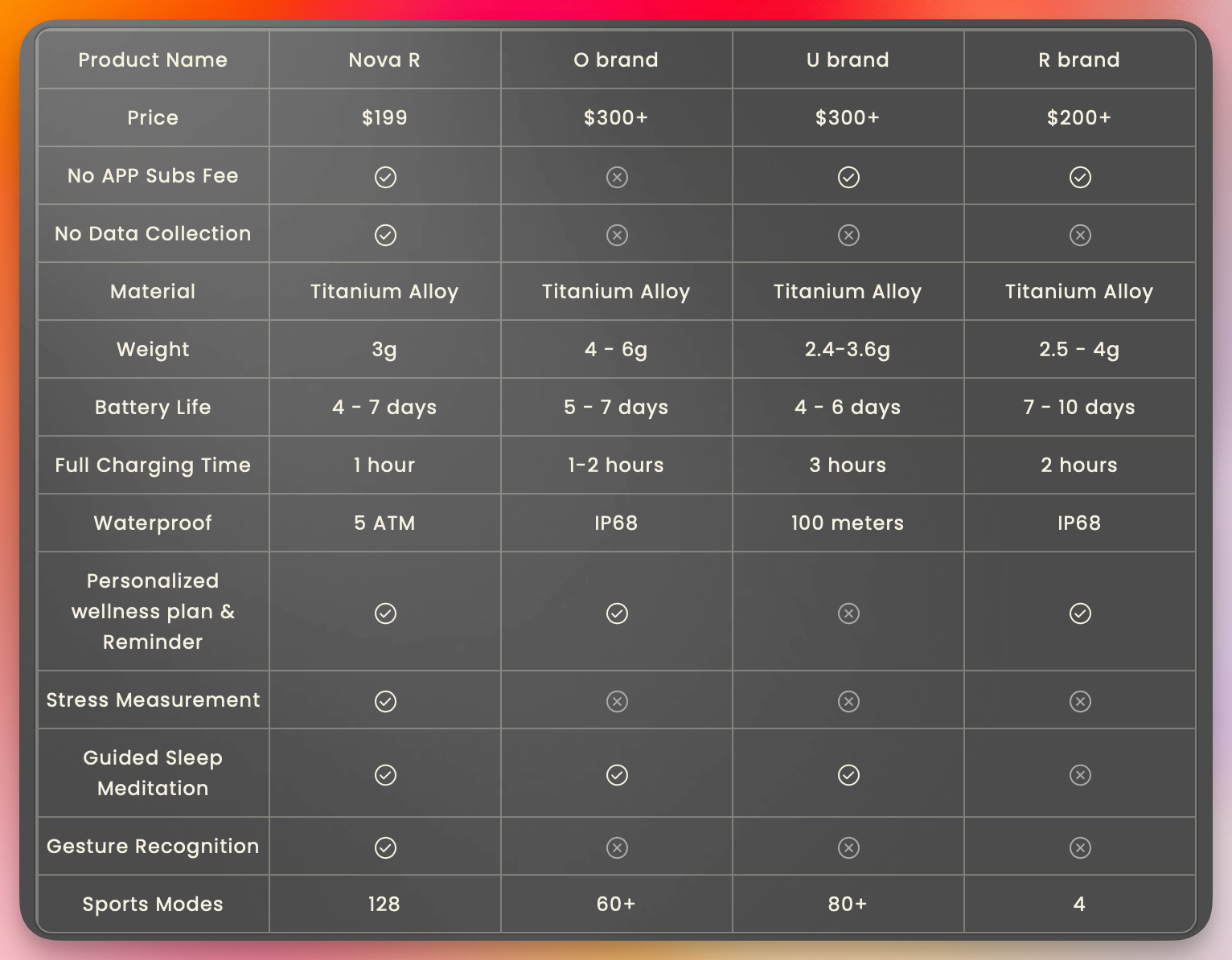
There are also several statements here that aren’t entirely up to date or 100% accurate. Let me briefly comment on the most notable ones:
- Stress Measurement – I assume Nova means stress is measured only on demand. If that’s correct, then yes — the entry in this line is basically accurate. However, all competitors measure stress continuously throughout the day, which I find more valuable than Nova’s approach.
- No Data Collection – This likely means that Nova does not store your personal health data on its servers and keeps most of it locally on your phone. While this appears mostly true, there are exceptions, such as crash logs or basic analytics. Oura, on the other hand, stores data on its servers but ensures strong privacy safeguards, anonymization, and even provides additional options like API access — which I consider an advantage.
- Personalized Plans & Reminders – According to the table, all brands except Ultrahuman offer this feature. However, based on my experience — especially after the latest updates (see Sprint Release article) — I actually find Ultrahuman’s reminders more personalized and targeted than Nova’s. Nova mainly offered me one type of notification: when a goal is achieved. By this, Nova probably means you can create your own reminder based on AI insights — see the example later below.
The OEM/ODM/"Clone" Question
I own a lineup of smart rings that look and feel very similar — something often noticed in the wearable tech community. At first glance, it’s easy to assume that many of these products might come from the same OEM suppliers, just rebranded under different names.
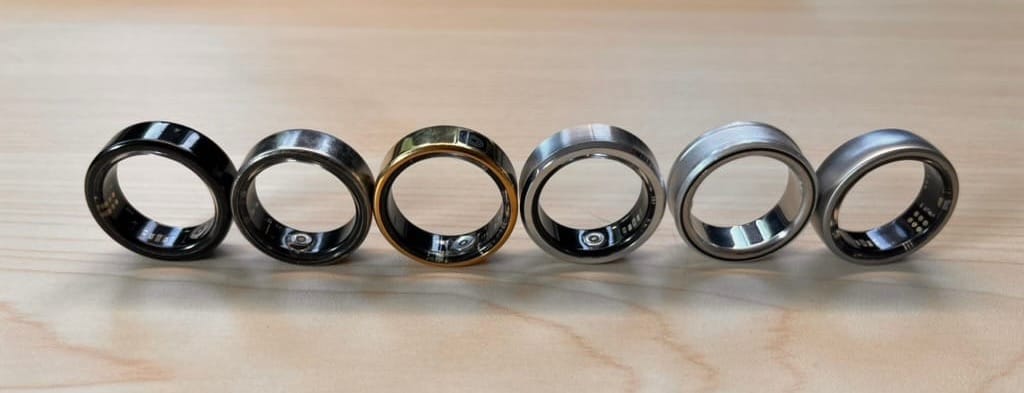
However, Nova has clarified that this is not their case. According to the company, they operate as an ODM (Original Design Manufacturer) with their own production lines and a workforce of several hundred employees. Nova is positioned as the retail brand within this structure, meaning both the hardware and software are developed in-house.
This setup theoretically provides an advantage over typical rebranded products — especially in terms of long-term support and a higher chance of regular app updates.
🎯 Accuracy and interpretation
I use as a "reference device" Oura ring, current leader of 🏆 Best smart ring comparisons.
Specifically, we’ll look at trends in average nightly heart rate (HR):
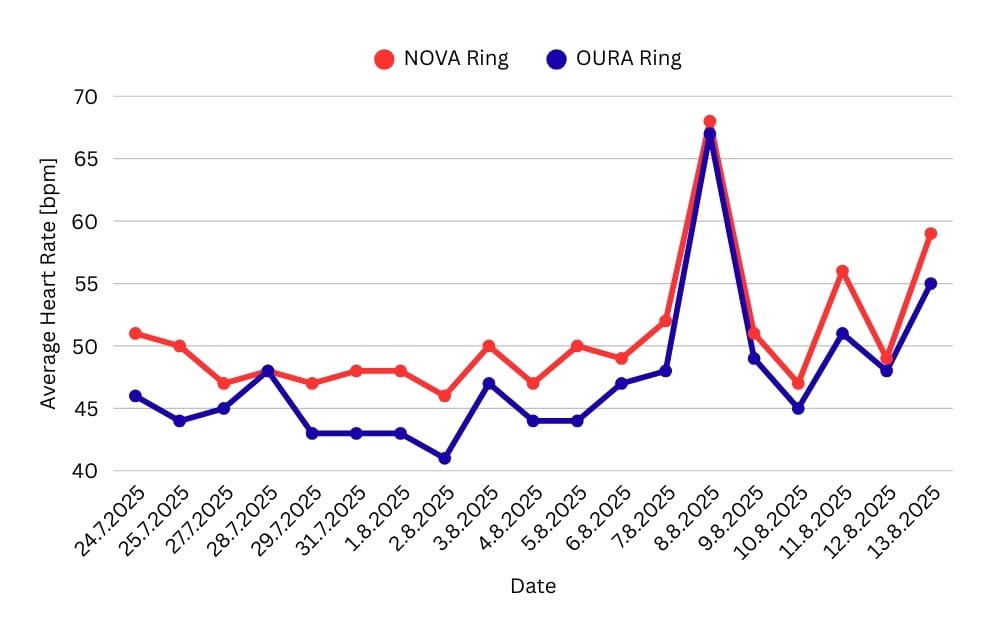
And also at HRV, that is, heart rate variability:
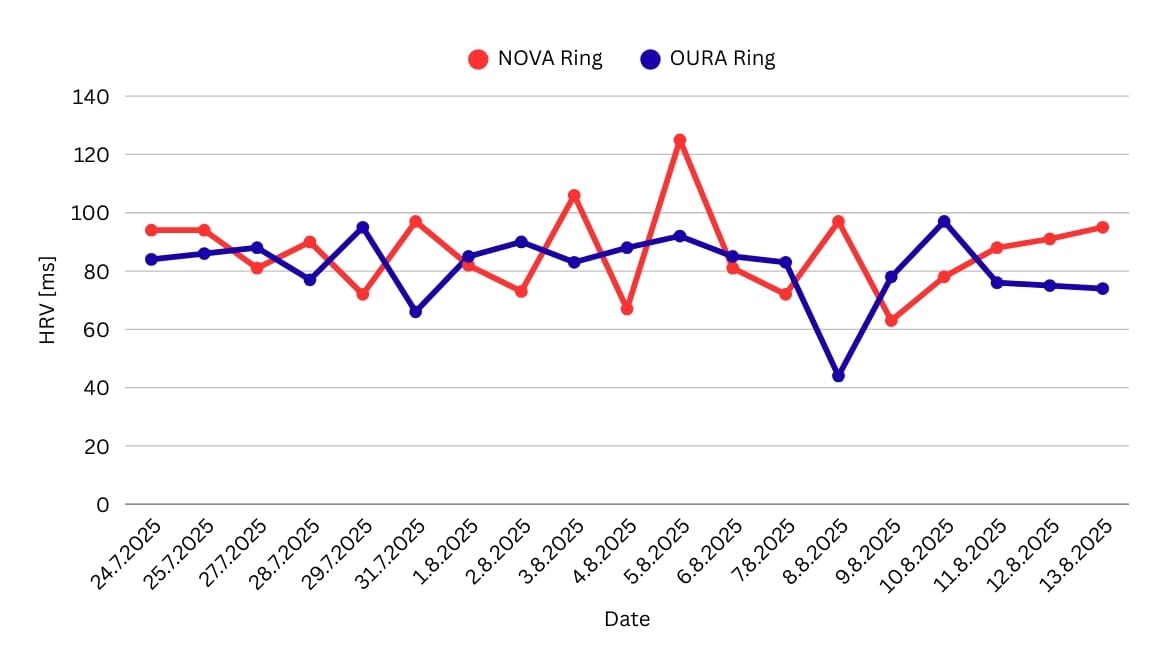
Yes, we’re comparing a ring that comes at a fraction of Oura’s price (and without the extra subscription). Still, when it comes to average nightly heart rate (HR), I would expect only a small difference – maybe a couple of beats per minute. With NOVA, however, the average offset is around 5.9 bpm, which is quite a lot. That said, the correlation between the two devices remains strong, so the overall trends are aligned.
For HRV, the differences are more pronounced, with several spikes visible in NOVA’s data that Oura does not replicate. These discrepancies can be from several factors – differences in filtering algorithms, noise handling, or even methodological choices such as whether certain sleep phases (e.g., wakefulness) are included in the calculation.
Interpretation
Nova claims to use AI for Insights and Recommendations. And yes, you do get some insights on the home tab of the app. However, too often the focus is on things that are certainly important, but I would expect something more meaningful — we’re talking about steps. See the examples below:
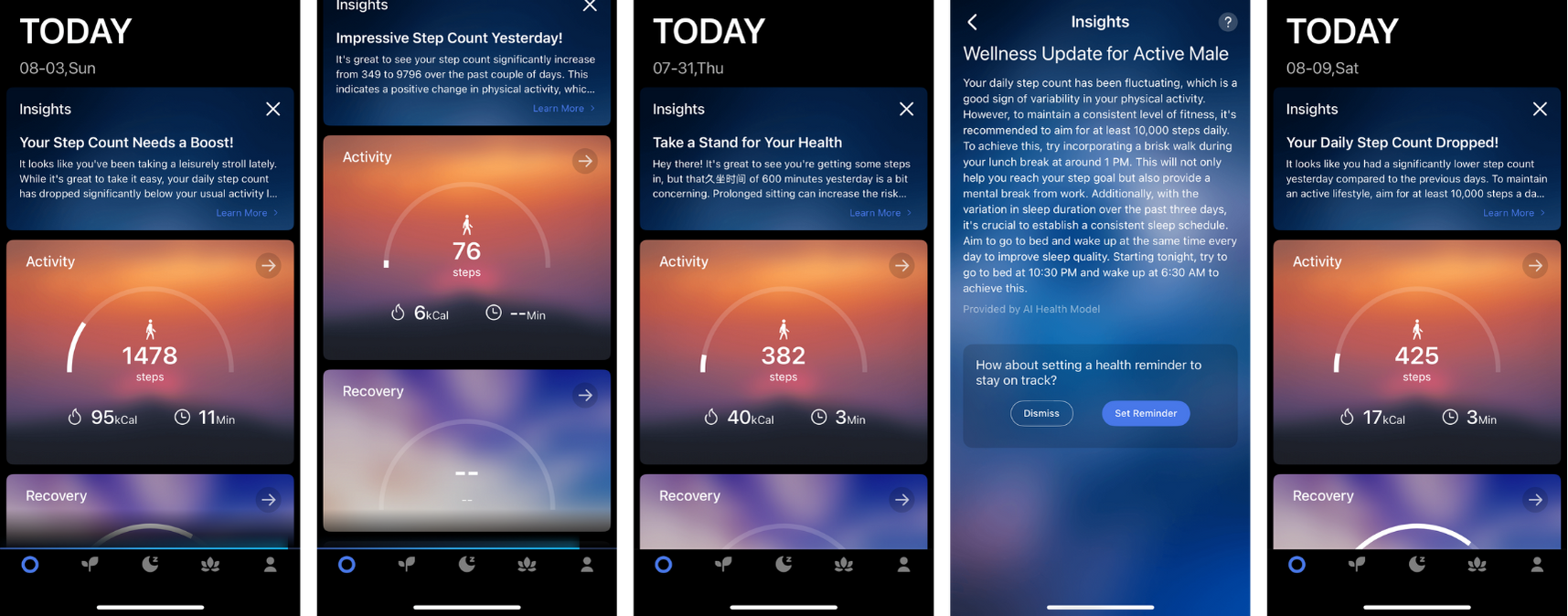
On the other hand, I also received some notifications about the need to focus on sleep:
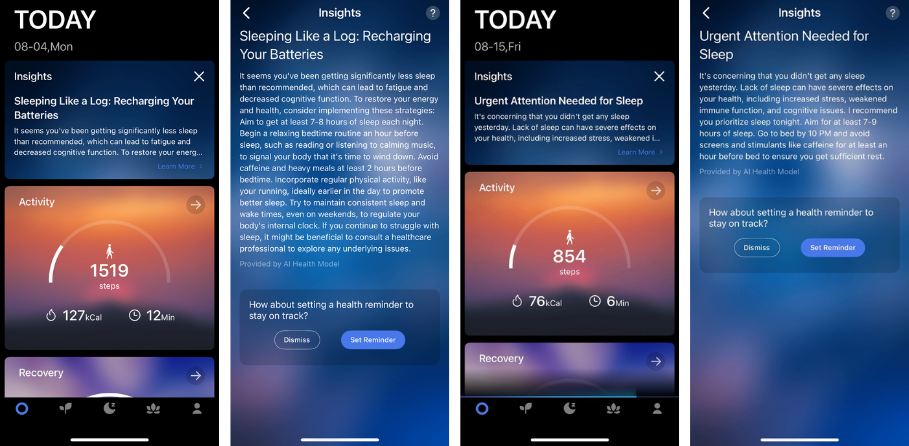
And as you can see above, you can also set up time-based reminders.
There are two main use cases you can rely on to test how well the ring interprets unusual data. The first one is illness (see my comparison Best Smart Ring: The Sick Test 🤒). I wasn’t sick during the testing period — fortunately — so I chose the second option: alcohol. 🍺 (Yes, I did it for you, in the name of testing 👀).
So, how do the data (and the insights/recommendations) from the Nova Ring R — and others for comparison — look after a night with 3 beers and 1 shot?
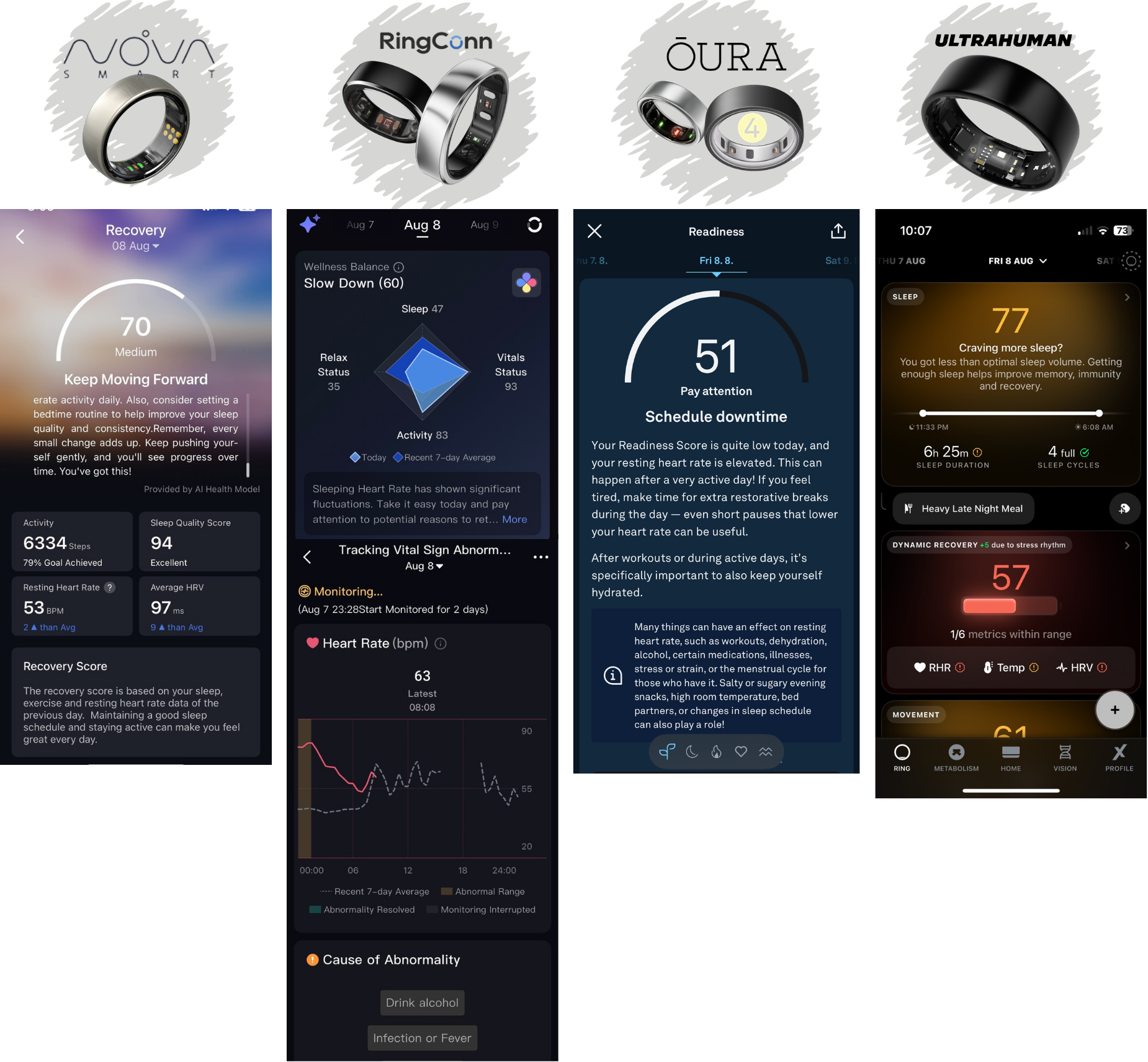
To sum up, NOVA basically acted as nothing unusual had happened. RingConn told me to slow down and, as a bonus, also activated Abnormality Tracking. Oura gave me a low score due to an elevated resting heart rate, noting that alcohol could be one of the reasons. Ultrahuman behaved similarly, with low scores and both RHR and HRV out of range.
Tags
One interesting feature — which I still don’t consider standard for cheaper smart rings — is tags, also known as journaling. You can track your mood, add tags, and write notes.
See below:
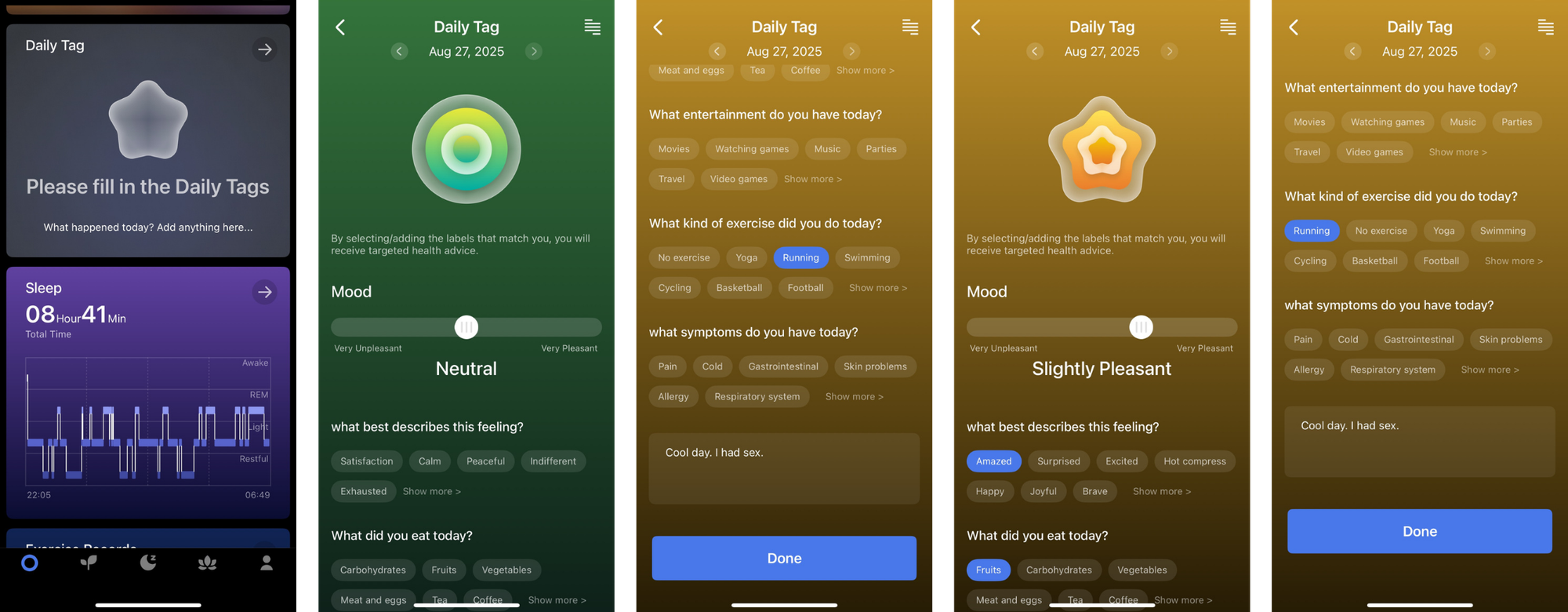
And what’s even cooler, there’s a crossover between tags and Insights, as you can see in the example below. Of course, it’s a bit general, but not bad at all.

Gesture Control
An unexpected bonus feature is gesture control, which lets you use the ring as a remote shutter for taking photos. It’s simple, works reliably, and is something even most premium smart rings don’t offer.
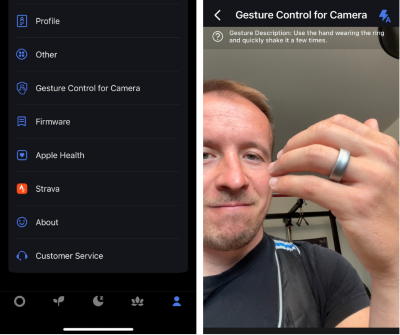
Meditation
The app includes a library of free breathing and meditation practices, which is a nice addition. However, they aren’t directly connected to the ring’s sensors — meaning you won’t see heart rate or other real-time metrics during the sessions.
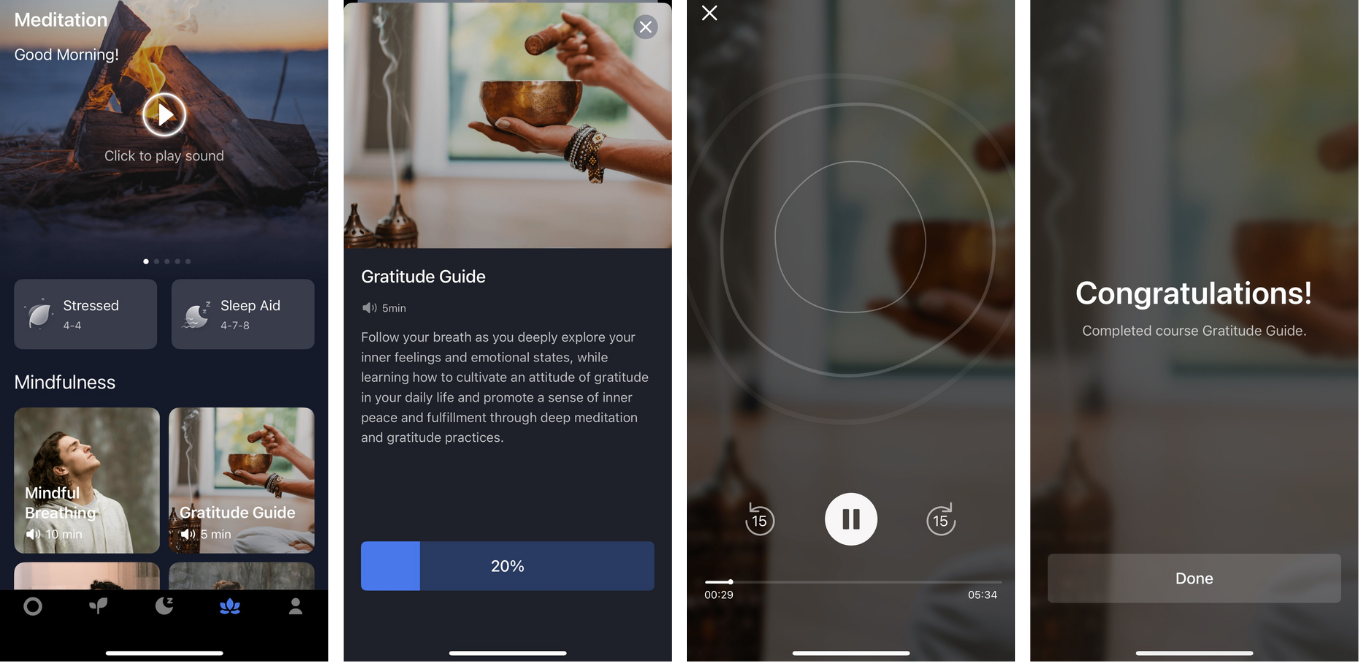
🎬 Final Verdict
The Nova Ring R is not a breakthrough smart ring — but at approximately half the price of premium models (and without a subscription), it still offers a lightweight titanium build, a much-improved app, core health metrics (HR, HRV, SpO₂, sleep, steps), and a nice journaling feature connected to Insights.
Yes, it falls short on continuous stress and SpO₂ tracking, HRV accuracy is weaker, and insights often feel oversimplified. Still, it’s a clear upgrade from Nova’s first-generation model and a practical entry point for anyone who wants to try smart rings without overpaying.
👉 If you’re looking for an affordable entry into the smart ring ecosystem with no subscription fees, the Nova Ring R is a choice.
On the other hand, I more interested in new models of Nova company: Crystal, Pay, X.
| ✅ Pros | ❌ Cons |
|---|---|
| 💍 Lightweight titanium ring (~3 g, matte finish) |
🔋 Below-average battery life (3–4 days) |
| 📦 Compact packaging with magnetic dock |
📊 Lower HR & HRV accuracy vs Oura |
| 📱 Improved, stable, smooth app | 🚫 Stress & SpO₂ on-demand not continuous |
| 🧘 Tags/journaling linked to Insights |
🤖 Insights often too basic (mainly about steps) |
| 💰 Half the price of premium rings |
🌙 Bright LEDs during HR distracting at night |
| Gesture control | Missing advanced reports data analysis, API |

